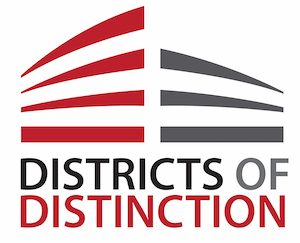Williamsville Central School District has developed software that automatically assigns students to attend labs where they receive math interventions if they get questions wrong on grade free tests, which all four of the New York district’s middle schools administer every morning.
Later in the day, school officials post physical lists in hallways or on classroom doors that contain the ID numbers of students who are struggling with math to attend the lab, which is led by specially trained academic support teachers. “Sometimes teachers just have to answer one question to clear up the misconception and then students are good to go,” says Christopher McGinley, instructional specialist in mathematics. “The intervention is no longer a life sentence. There is a way to get out.”
During school closures, district officials understood that students could not always answer these daily assessment questions, so intervention teachers staggered their Zoom office hours—allowing students to access them in addition to regular math instructors.
“Our program focuses on growth and improvement instead of grades, so students can really move forward in the curriculum and understand the concepts,” says Superintendent of Schools Scott Martzloff. “Having a real-time formative assessment that happens on a daily basis really drives this improvement forward.”
Expanding math interventions
While Williamsville schools had already been providing remediation efforts for its lowest-achieving students, district leaders decided to adopt an idea that a middle school math specialist came up with about six years ago to automate math interventions for students struggling with math. In one year, in-house programmers created the software, which now connects to the student information system.
Related: How to help educators teach meaningful math online during closures
Related: Male students more confident in math and STEM class
Related: Intervention strategies evolve
Related: 3 districts closing achievement gaps with at-risk and minority students
The district first launched a one-year pilot in grade 5 at one middle school and tweaked the program before expanding the initiative to grade 6 after experiencing positive results. “We wanted the program to be more readable and accessible,” says McGinley. “The tweaks involved switching from showing numeric data to more graphical representations so that teachers could get the information quickly.” Other updates now allow teachers to view and organize data in multiple ways to help drive decision-making.
The district later added more grades to the pilot and then added all four middle schools. “We didn’t want to expand the program too quickly so we could provide targeted support since implementation affected building logistics. It needed to be scalable,” says McGinley.
Not just for students struggling with math
To accommodate the math lab, schools repurposed preexisting intervention classes to take in the flow of students who would need math interventions. Administrators also communicated to teachers and parents about adopting grade free tests.
Williamsville Central School District (N.Y.)
District size:
9,926 students
Superintendent:
Scott Martzloff
Initiative launched:
2015
“Pre-COVID, we found that kids who are not assigned to the math lab are still choosing to go while others are realizing that they need to be more prepared every day before class,” says McGinley. “They are putting more effort into their homework and reviewing their notes.”
 “Everybody’s budget is stretched, especially now during this global pandemic, so adopting such an initiative is a question of whether you want your students to grow and improve,” adds Martzloff. “For us, it worked well to implement this at the middle school level and I hope we can expand this in the future.”
“Everybody’s budget is stretched, especially now during this global pandemic, so adopting such an initiative is a question of whether you want your students to grow and improve,” adds Martzloff. “For us, it worked well to implement this at the middle school level and I hope we can expand this in the future.”
To learn more about Districts of Distinction, click here

